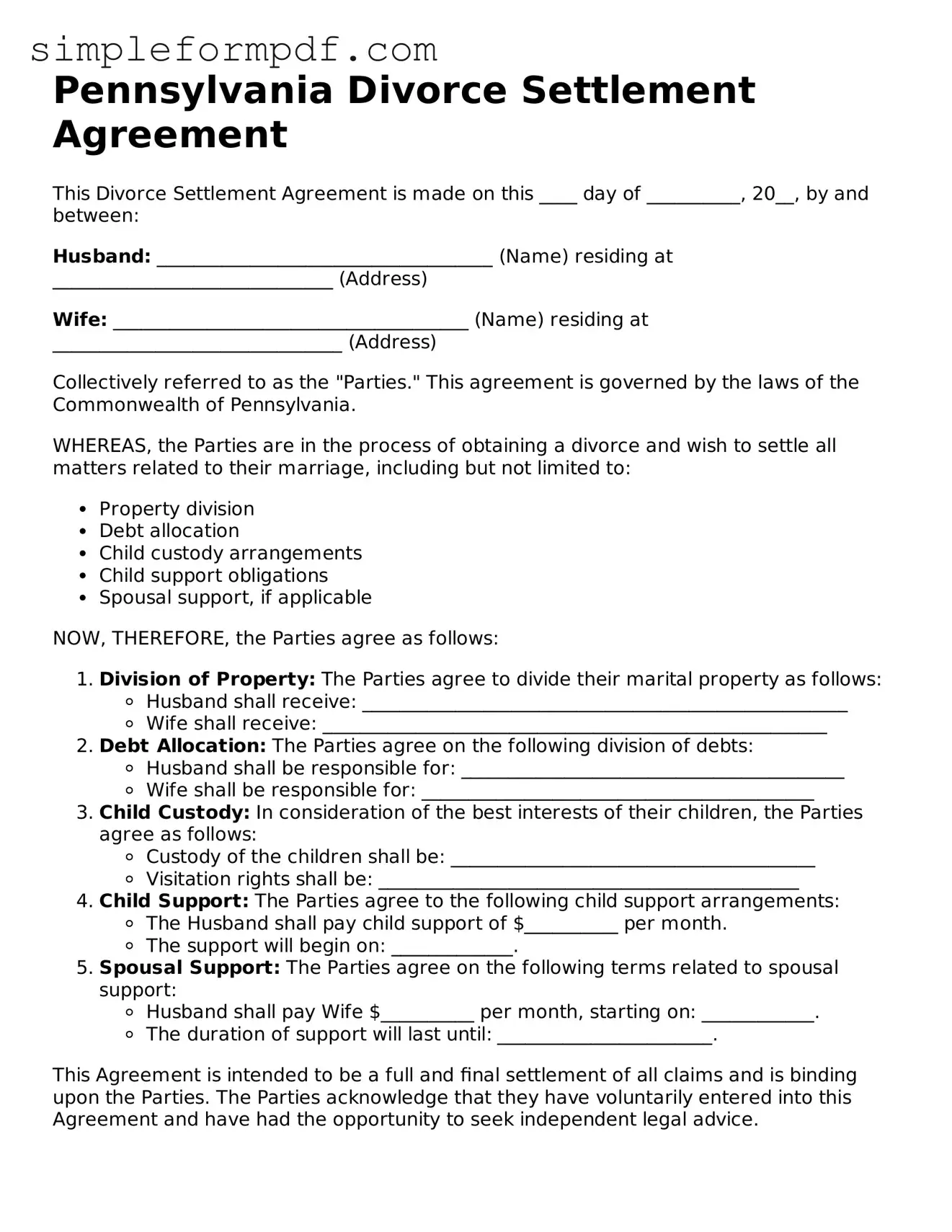Pennsylvania Divorce Settlement Agreement
This Divorce Settlement Agreement is made on this ____ day of __________, 20__, by and between:
Husband: ____________________________________ (Name) residing at ______________________________ (Address)
Wife: ______________________________________ (Name) residing at _______________________________ (Address)
Collectively referred to as the "Parties." This agreement is governed by the laws of the Commonwealth of Pennsylvania.
WHEREAS, the Parties are in the process of obtaining a divorce and wish to settle all matters related to their marriage, including but not limited to:
- Property division
- Debt allocation
- Child custody arrangements
- Child support obligations
- Spousal support, if applicable
NOW, THEREFORE, the Parties agree as follows:
- Division of Property: The Parties agree to divide their marital property as follows:
- Husband shall receive: ____________________________________________________
- Wife shall receive: ______________________________________________________
- Debt Allocation: The Parties agree on the following division of debts:
- Husband shall be responsible for: _________________________________________
- Wife shall be responsible for: __________________________________________
- Child Custody: In consideration of the best interests of their children, the Parties agree as follows:
- Custody of the children shall be: _______________________________________
- Visitation rights shall be: _____________________________________________
- Child Support: The Parties agree to the following child support arrangements:
- The Husband shall pay child support of $__________ per month.
- The support will begin on: _____________.
- Spousal Support: The Parties agree on the following terms related to spousal support:
- Husband shall pay Wife $__________ per month, starting on: ____________.
- The duration of support will last until: _______________________.
This Agreement is intended to be a full and final settlement of all claims and is binding upon the Parties. The Parties acknowledge that they have voluntarily entered into this Agreement and have had the opportunity to seek independent legal advice.
IN WITNESS WHEREOF, the Parties have executed this Divorce Settlement Agreement as of the date first above written.
______________________________
Husband’s Signature
______________________________
Wife’s Signature
Date: _____________________
